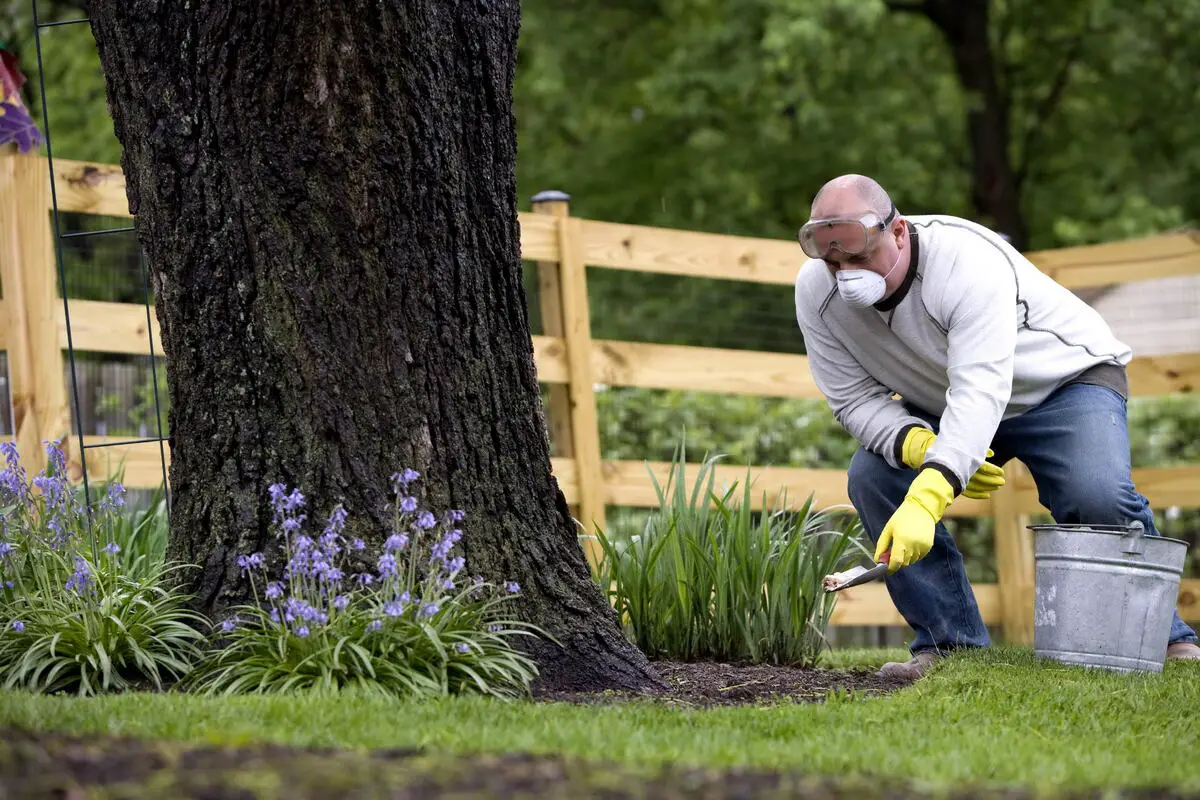DIY fertilizers are nutrient-rich materials that have undergone minimal processing, allowing the nutrients to stay in their unaltered forms. Kelp, alfalfa meal, cow manure, limestone, chicken manure, worm castings, compost, and compost teas are just a few natural fertilizers utilized in agriculture.
Table of Contents
8 Easy DIY Options to Fertilize Houseplants Naturally
Make your own fertilizers for your indoor plants by following the steps below.
1. Epsom Salt Fertilizer
- Dissolve a solution of 1 tablespoon of Epsom salt per gallon of water.
- Please give the solution a good shake.
- Put the mixture to use by watering your plants.
- They should be irrigated with this mixture once a month in their growing phase.
Epsom salt contains both magnesium and sulfate, two elements that are essential for plant growth.
Houseplants, tomatoes, potatoes, peppers, and roses are just some plants that would benefit from a magnesium treatment.
Just like with any type of fertilizer, a little can go a long way. It would be best if you used the proper dosage for the size of your plant.
2. Coffee Ground Fertilizer
- Prepare a newspaper-lined baking sheet.
- The coffee grounds should be spread over the sheet to dry.
- Your acid-loving plants will appreciate having the grounds sprinkled around their roots.
Why does this work?
Because coffee grounds contain a wealth of nitrogen, magnesium, and potassium, three essential nutrients for plant growth. They contribute to the soil’s acidity because of their inherent acidity.
All sorts of plants, including roses, azaleas, blueberries, and rhododendrons, will flourish after receiving this remedy.
3. Eggshells as Fertilizer
- You can use shell powder to fertilize your garden.
- Let the eggshells dry out, and keep the ones you collect.
- You should grind the dried shells into a powder in a blender.
Because calcium carbonate (found primarily in eggshells) is the principal element in agricultural lime, this plays well.
You can substitute this for lime when gardening.
4. Vinegar Fertilizer
- Add one spoonful of white vinegar to 1 glass of water.
- Put the mixture to use by watering your plants.
- At three-month intervals, do it again.
Vinegar’s acetic acid increases soil acidity, making it ideal for plants that prefer a low pH.
Instead of using houseplant fertilizer, rose plant food, or soil acidifiers, you can use this instead.
5. Aquarium Water or Fish Tank Water
Homeowners with a freshwater aquarium already have a ready source of fertilizer for their indoor plants.
The decaying fish waste and food provide a significant quantity of natural nutrients to the wastewater, making it rich in these nutrients.
At the next aquarium water change, sprinkle this on the soil of your houseplants. You can substitute it for any type of fertilizer.
6. Fireplace Ashes
Amass cooled ashes from the fireplace. You can improve the soil in your garden by mixing in cold fireplace ash.
Ash from a fireplace contains a significant amount of potassium and calcium carbonate. When applied to acidic soil, it raises the pH level, making it easier for plants to take up the soil’s nutrients.
You can substitute it for garden lime.
7. Banana Peels
High in phosphate and potassium, banana peels will strengthen your plants, increase their fruiting, and provide disease resistance.
Banana peels can be chopped and sown at a depth of three to four inches in the soil, or they can be soaked in clean water for three to four days and afterward sprayed over plants.
8. Make a Compost
- You should save compostable materials such as food scraps, paper, and grass clippings.
- Put them to good use by beginning a compost pile or bin.
- You can hasten your materials’ decomposition by occasionally adding water and turning the pile.
When all the components have decomposed into dark, nutrient-dense soil, it is time to apply the mixture to your garden.
Why Is Fertilizing Plants Important?
Your plants cannot thrive without nitrogen, phosphorus, and potassium nutrients. The NPK ratio is also significant.
The decomposing plant matter is a common source of nitrogen, phosphorus, and potassium in the natural environment. Only decaying and live plant matter can provide nitrogen to a plant.
We can achieve faster plant growth by providing the necessary nutrients in forms that are easily absorbed.
Fertilizer is meant to do just that.
4 Benefits of Natural Fertilizers For Houseplants
Regarding indoor gardening, several reasons favor natural fertilizers over chemical fertilizers.
These include:
- Very Low Risk: Because of the slower breakdown rate and lower concentration of natural fertilizers, there is far less chance of plant burn and no accumulation of hazardous salts in the soil or groundwater.
- Soil Building: Potting soil fertilized with natural fertilizers rich in organic matter has better aeration, holds more water and nutrients, and has a more robust microbial community.
- Environmentally Reliable: All-natural fertilizers are better for the planet because organic materials are renewable and decompose quickly.
- Affordable Alternatives: While commercial natural fertilizers tend to be more expensive than chemical blends, it is possible to prepare inexpensive homemade fertilizers with ingredients around the house.
When Should You Fertilize Indoor Plants?
It’s ideal to use natural plant fertilizer in the spring and summer.
It’s acceptable to keep using it well into early October if you reside in a warmer climate during the winter.
When mid to late October rolls around, you can safely stop giving your plants fertilizer. In the months when daylight hours are shorter and temperatures are lower, they need to rest more.
Should You Fertilize A Sick Plant?
To fertilize a plant that is already sick is counterproductive.
Fertilizing plants when they’re already stressed only makes the situation worse. Instead of feeding the plant itself, it’s better to feed the soil.

